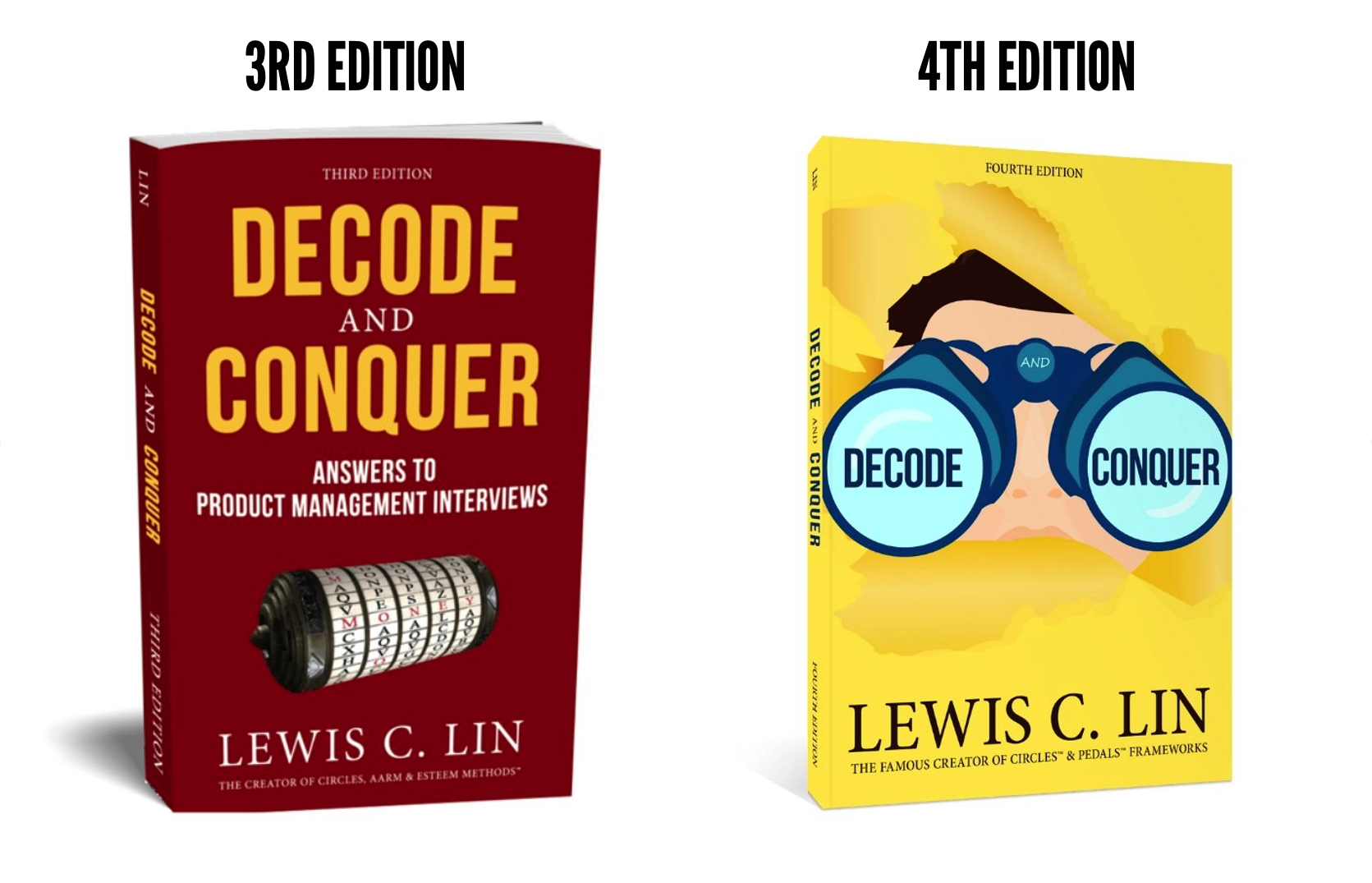Here’s the most common question I have been asked since I released Decode and Conquer, 4th edition:
Can you please tell me the difference between the two editions of the book?
I want to buy a book that will help me best prepare for my upcoming PM interviews. My colleague recommended the book you wrote Decode & Conquer. I found multiple editions but I’m not sure which one to buy. Could you please tell me the difference?
DIFFERENCE BETWEEN THE 3RD AND 4TH EDITION
I’d be happy to tell you about the new changes in the 4th edition:
Expanded section On Strategy
I’ve rewritten the strategy section to appeal to both strategy beginners and experts.
Beginners will appreciate the detailed strategy primer. Experts will appreciate the elegant reintroduction to strategy that’s not convoluted.
I’ve also streamlined the strategy framework so that it is centered around the venerable and most popular strategy framework, the 3Cs.
I also define and explain the most important strategy terms such as:
Opportunity cost
Vertical integration
Aggregation theory
Lastly, I discuss key strategic patterns including:
Competing in emerging markets
Competing in developing markets
Competing in shrinking markets
Dealing with competitors
Strategically preserving option value
New Tradeoff Section
I’ve created two new chapters dealing with tradeoff questions like:
Should a social media site’s videos default to autoplay or click- to-play?
How do you decide between a display ad or a “people you might know” widget in the newsfeed?
Should a social media site require its users to upload profile pictures when they sign up?
The first chapter discusses how to deal with tradeoff questions from a qualitative (non-numerical) perspective. And the second chapter discusses how to handle tradeoff questions from a quantitative perspective that advanced interviewers will expect.
I also illustrate an elegant way to organize your analysis, a framework I call option A vs. B:
Expanded section On Metrics & Execution
I’ve revamped the metrics section (Facebook calls them execution questions) to provide more guidance on how to choose a North Star metric:
I’ve also included the helpful TROPIC framework to help you make your way through diagnosis questions like “Daily active users went down 7% week-over-week. How would you diagnose it?”
New Market Entry Section
I’ve created a new chapter on entering new markets that includes eight factors you should consider when making a strategic decision:
Goal
Product-Market Fit
Market Size
Distribution
Team and Capabilities
Competitive Moat
Business Model
Timing
New A/B Testing Section
I also created a new section on how to approach A/B testing questions that includes a 5-step process:
And more changes
I also meticulously reviewed and re-wrote large sections of the book including:
Improved visuals
Simplified explanations
Optimized practice questions for easier comprehension
I also updated the book to reflect the latest changes in the PM interview process with a wealth of frameworks, examples, and lessons built in.
WHICH ONE SHOULD I GET
If you’ve been waiting to get Decode and Conquer, you should absolutely get the latest edition. Your time is too valuable to read older editions.
If you own the 1st or 2nd edition, be sure to upgrade to the latest edition. It’s been nearly 10 years since even the 2nd edition. The 4th edition will be an important addition to your bookshelf even if you’re not planning to interview. (Yes, CIRCLES and other frameworks will be invaluable on the job too.)
If you have the 3rd edition, you have a difficult decision to make. You can get by with the 3rd edition. However, I’d argue that there are so many new changes that you’ll strongly appreciate the clean, updated 4th edition text.





